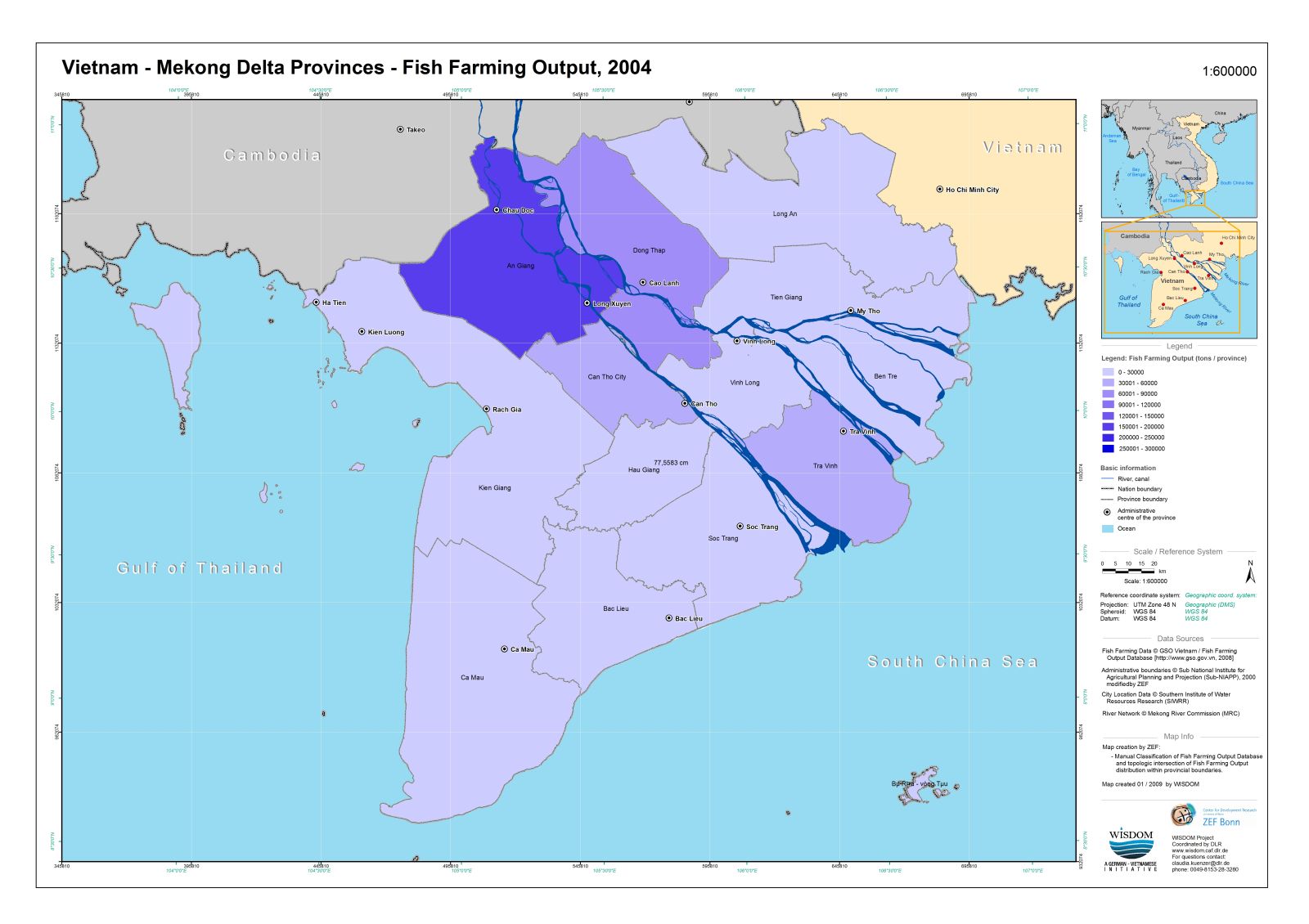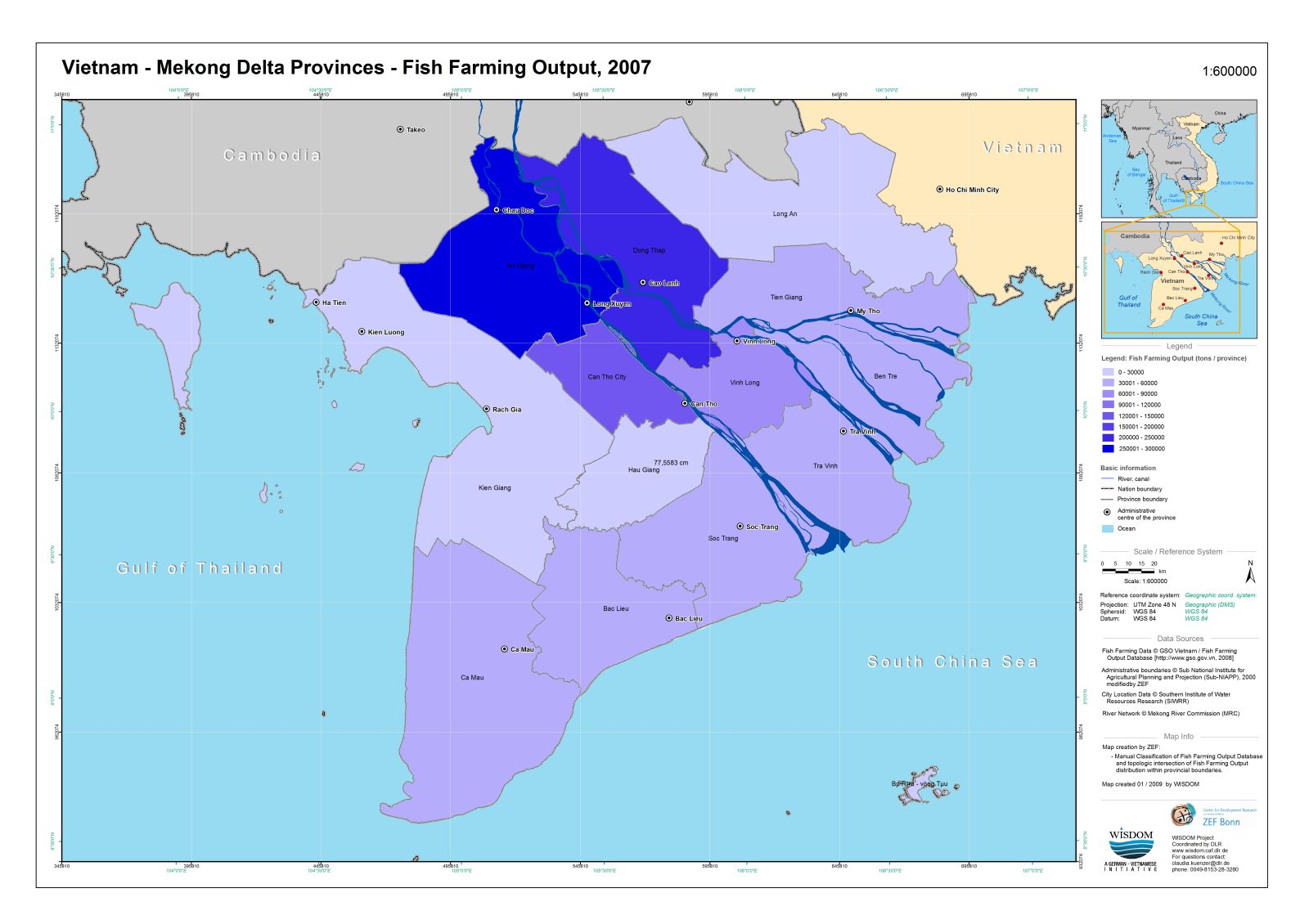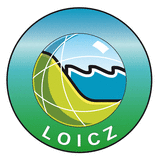Mekong Delta - Fish Farming Output, 2004 & 2007
Fish farming in the Mekong Delta has developed rapidly since the Vietnamese government’ s agricultural policy shifted away from mono-cultural rice production to more diversified models of farming systems (at the end of the 1990s). With over one million tons of farmed fish, today, the delta’s output is six times higher than it was 10 years ago in 1997 and accounts for more than 70 percent of the entire national output of farmed fish.
Figure 1: Mekong Delta – Fish Farming Output, 2004. Scale: 1:600.000

Figure 2: Mekong Delta – Fish Farming Output, 2007. Scale: 1:600.000
GIS: Reference coordination system: Projection UTM 48 N; Datum WGS 84
They illustrate the annual output from fish farming at the province level within the Mekong Delta.
The most important map attributes such as class values and reference scale are tabulated in the map frame.
In this context, catfish fish farming (pangasius hypophathmas & pangasius bocourti) has become a lucrative business for many people in the delta, in particular in areas where enough fresh water is available all year round. Thus, during recent years the upstream provinces of Dong Thap, An Giang and the northern portion of Can Tho have developed into a center of catfish production. Today, with over 600 thousand tones of farmed fish these three provinces produce 55 percent of the deltas output and account for over 40 percent of the national production of farmed fish. A high proportion of the Mekong Delta’s catfish is exported to global markets in the EU or US.
Although these impressive growth rates show how important fish farming nowadays has become for the delta’s economic development, new environmental problems are also one the rise. Uncontrolled digging of ponds and discharge of waste waters caused by fish farming into open water sources has increasingly led to a decline in water quality and could eventually pose threats to human health.




